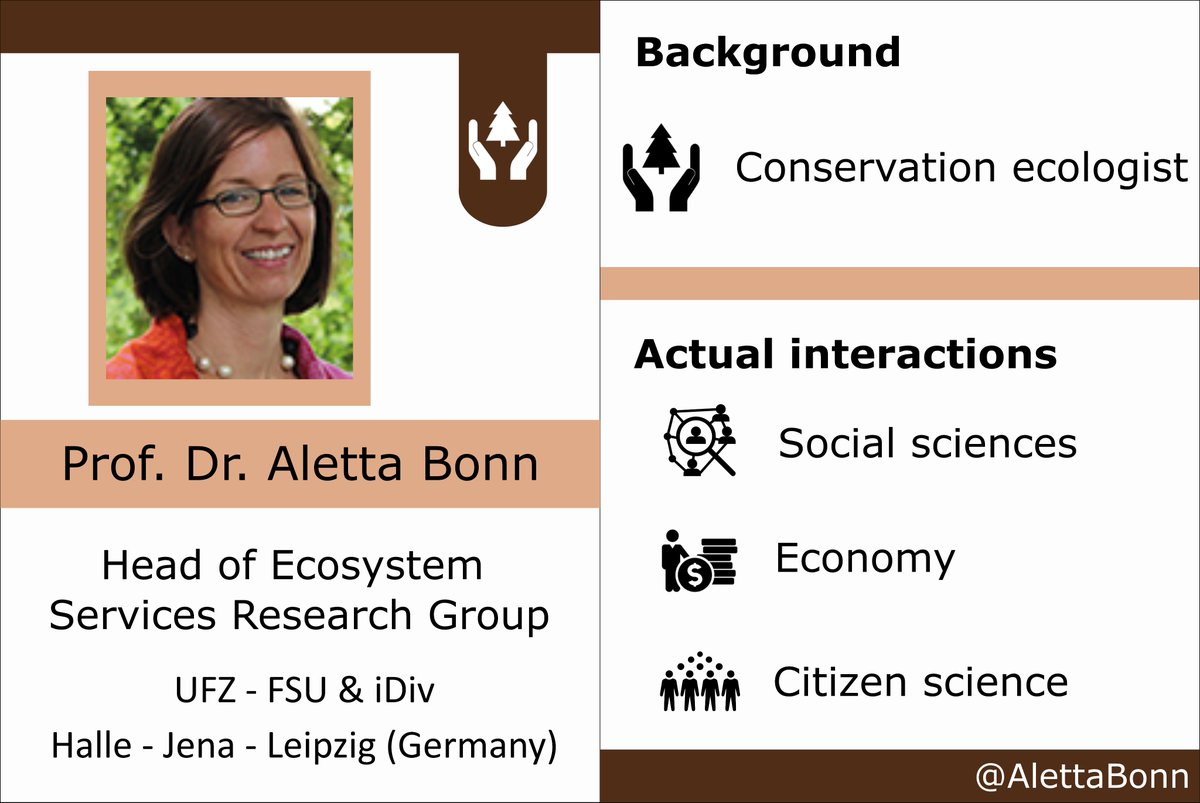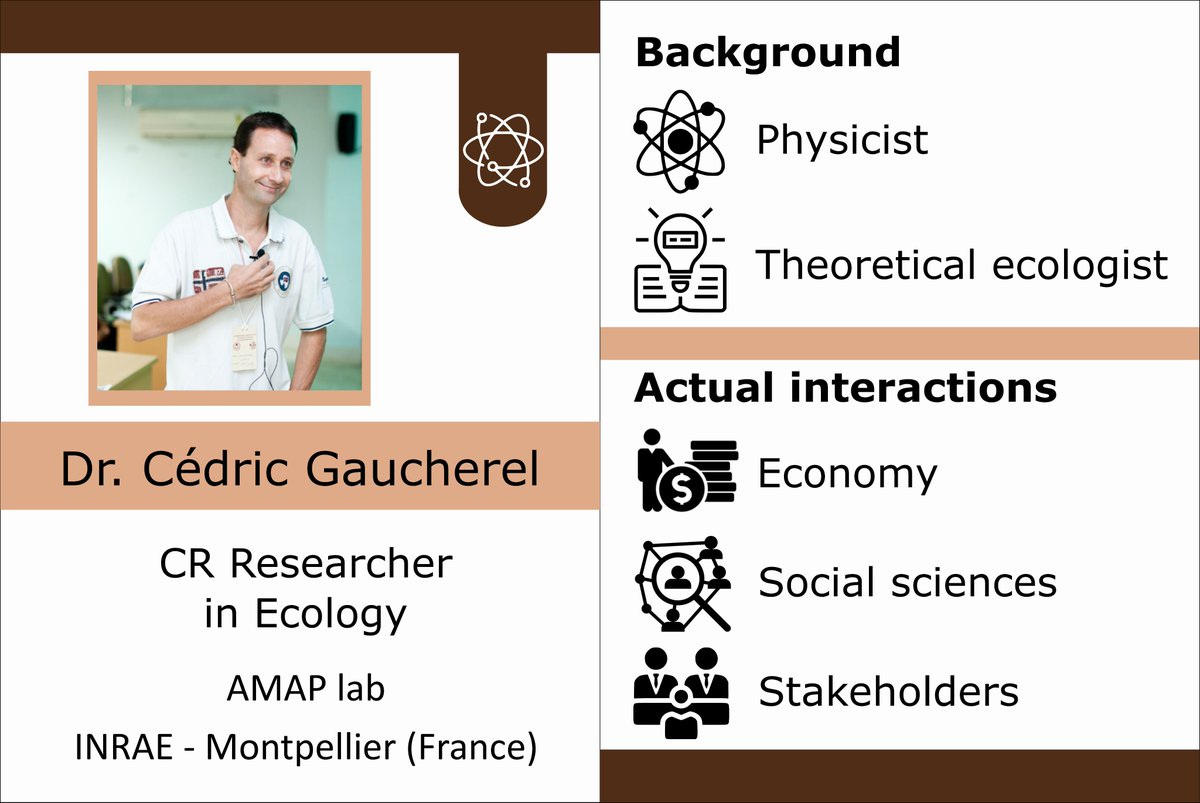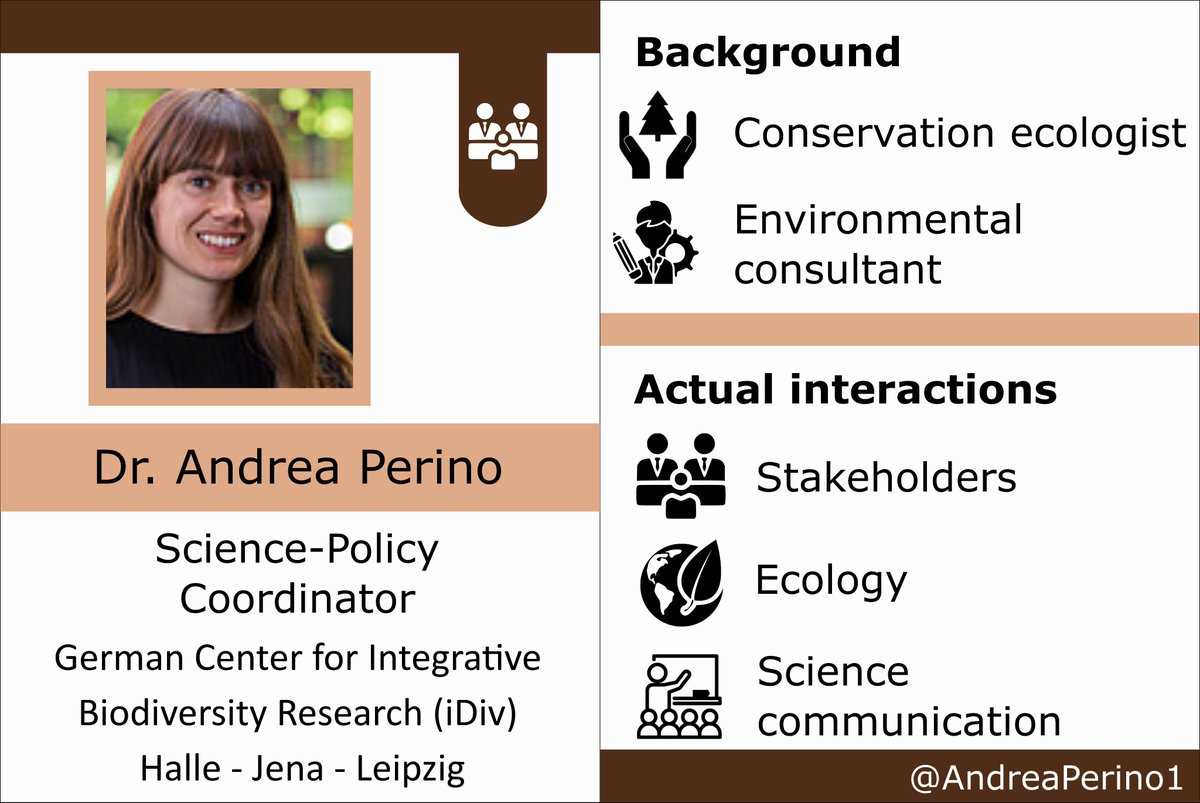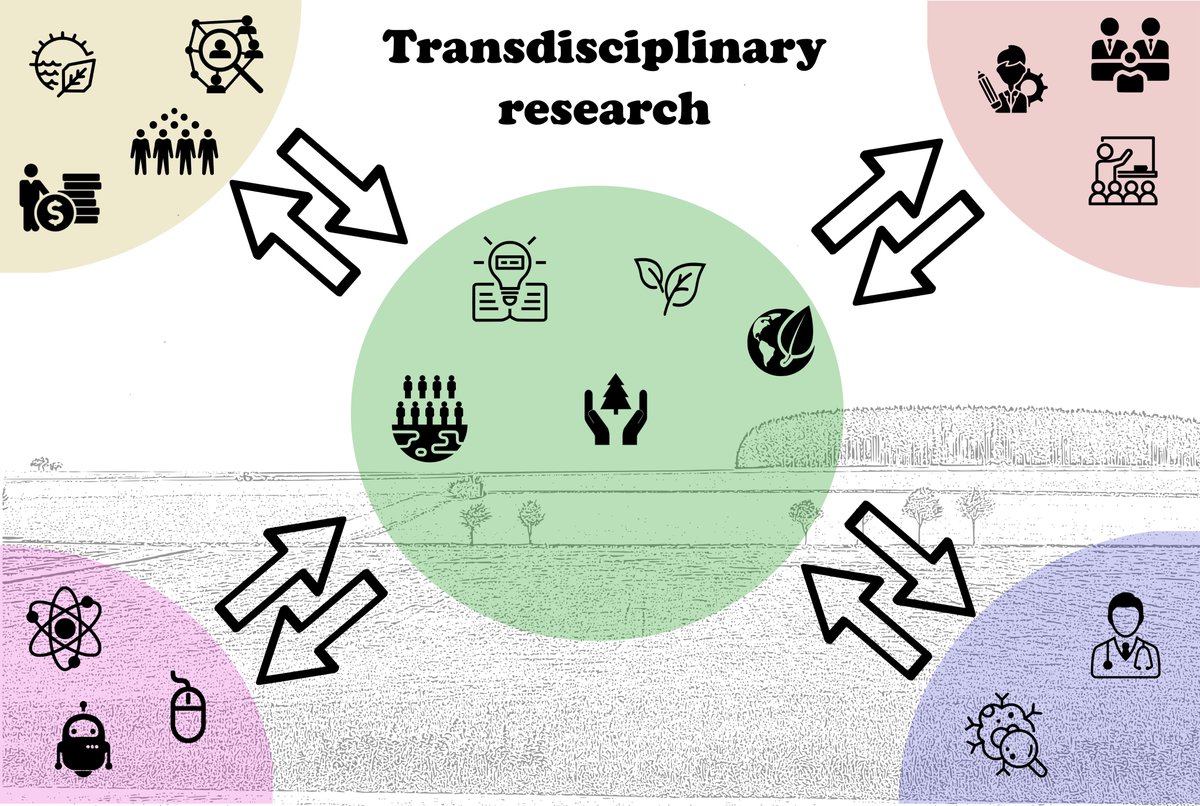𝐓𝐡𝐞 𝐰𝐨𝐧𝐝𝐞𝐫𝐬 𝐨𝐟 𝐭𝐫𝐚𝐧𝐬𝐝𝐢𝐬𝐜𝐢𝐩𝐥𝐢𝐧𝐚𝐫𝐲 𝐫𝐞𝐬𝐞𝐚𝐫𝐜𝐡
Over the next 14 days, we want to get to the bottom of transdisciplinary research. What transdisciplinary research is, why it is so relevant today, what are its obstacles. [1/22]
Over the next 14 days, we want to get to the bottom of transdisciplinary research. What transdisciplinary research is, why it is so relevant today, what are its obstacles. [1/22]
To answer the complex questions of ecology, a variety of tools drawn from other disciplines are often used. Now, when researchers integrate these other disciplines into their research framework instead of just applying their tools, the story becomes interdisciplinary. [2/22]
The story becomes transdisciplinary when researchers begin to integrate non-academic collaborators into their research. [3/22]
Collaboration between disciplines can take place at three levels of integration (definitions from Kelly et al. 2019 in Socio-Ecological Practice Research): multidisciplinary, interdisciplinary, and transdisciplinary. [4/22]
Multidisciplinary research: “Different academic disciplines working together and drawing on their disciplinary knowledge in parallel, to conduct research on a single problem or theme but without integration.” (Kelly et al. 2019) [5/22]
Interdisciplinary research: “Different academic disciplines working together to integrate disciplinary knowledge and methods, to develop and meet shared research goals achieving a real synthesis of approaches.” (Kelly et al. 2019) [6/22]
Transdisciplinary research: “Different academic disciplines working together with non-academic collaborators to integrate knowledge and methods, to develop and meet shared research goals achieving a real synthesis of approaches.” (Kelly et al. 2019) [7/22]
In practice, however, the boundaries between these three levels of cooperation remain blurred, and it is a continuum rather than a strict classification. [8/22]
At a time when funding agencies are increasingly calling for transdisciplinary research, we need to take a closer look at what this means for researchers and their work. What can we learn and gain from it? What are the main constraints and drawbacks? [9/22]
In this project, we aim to understand what transdisciplinary research means in practice. In pursuit of this goal, we conducted a series of short interviews with researchers at the interface between ecology and other disciplines, such as physics, medicine, politics, etc. [10/22]
Website: https://www.idiv.de/en/groups-and-people/core-groups/ecosystem-services.html
Twitter:">https://www.idiv.de/en/groups... @AlettaBonn
Twitter:">https://www.idiv.de/en/groups... @AlettaBonn
Website: http://amap-collaboratif.cirad.fr/pages-chercheurs/?page_id=358">https://amap-collaboratif.cirad.fr/pages-che...
Website: https://www.idiv.de/en/groups_and_people/employees/details/172.html
Twitter:">https://www.idiv.de/en/groups... @AndreaPerino1
Twitter:">https://www.idiv.de/en/groups... @AndreaPerino1
Website: https://www.idiv.de/en/groups_and_people/core_groups/biodiversity_economics.html">https://www.idiv.de/en/groups... [14/22]
Website: https://neurosurgery.ufl.edu/faculty-staff/research-faculty/brent-reynolds-phd/
Twitter:">https://neurosurgery.ufl.edu/faculty-s... @stemcell1
[15/22]
Twitter:">https://neurosurgery.ufl.edu/faculty-s... @stemcell1
[15/22]
Website: https://www.zoo.ox.ac.uk/people/dr-rob-salguero-gomez#/
Twitter:">https://www.zoo.ox.ac.uk/people/dr... @Rob_salgo
[16/22]
Twitter:">https://www.zoo.ox.ac.uk/people/dr... @Rob_salgo
[16/22]
Over the next fourteen days, we will explore the different aspects of multidisciplinary and transdisciplinary research by focusing on the following points:
[17/22]
[17/22]
14th: Why should we bother to work interdisciplinary?
16th: What is the relevance of interpersonal relationships and communication?
19th: What importance do the products and recognition have?
21st: What is the best advice for a young scientist pursuing this path?
23rd: Conclusion
16th: What is the relevance of interpersonal relationships and communication?
19th: What importance do the products and recognition have?
21st: What is the best advice for a young scientist pursuing this path?
23rd: Conclusion
We will compile all the tweets related to this project on our website after their publication:
https://remybeugnon.netlify.app/project/transdiciplinary-research-wonders/
[19/22]">https://remybeugnon.netlify.app/project/t...
https://remybeugnon.netlify.app/project/transdiciplinary-research-wonders/
[19/22]">https://remybeugnon.netlify.app/project/t...
Before we delve deeper into the subject, who are "we"?
[20/22]
[20/22]
I am Marie Sünnemann, PhD student exploring the impacts of climate change and land-use on soil communities in the @UFZ_GCEF and part of the Experimental Interaction Ecology group ( @EisenhauerLab) at @iDiv.
Twitter: @Marie_Suen [21/22]
Twitter: @Marie_Suen [21/22]
I am Rémy Beugnon, a PhD student from the sino-german graduate school @TreeDi1, I am working in the Experimental Interaction Ecology ( @EisenhauerLab) group at @iDiv.
More about me on my site: https://remybeugnon.netlify.app/
Twitter:">https://remybeugnon.netlify.app/">... @BeugnonRemy
[22/22]
More about me on my site: https://remybeugnon.netlify.app/
Twitter:">https://remybeugnon.netlify.app/">... @BeugnonRemy
[22/22]

 Read on Twitter
Read on Twitter![𝐓𝐡𝐞 𝐰𝐨𝐧𝐝𝐞𝐫𝐬 𝐨𝐟 𝐭𝐫𝐚𝐧𝐬𝐝𝐢𝐬𝐜𝐢𝐩𝐥𝐢𝐧𝐚𝐫𝐲 𝐫𝐞𝐬𝐞𝐚𝐫𝐜𝐡Over the next 14 days, we want to get to the bottom of transdisciplinary research. What transdisciplinary research is, why it is so relevant today, what are its obstacles. [1/22] 𝐓𝐡𝐞 𝐰𝐨𝐧𝐝𝐞𝐫𝐬 𝐨𝐟 𝐭𝐫𝐚𝐧𝐬𝐝𝐢𝐬𝐜𝐢𝐩𝐥𝐢𝐧𝐚𝐫𝐲 𝐫𝐞𝐬𝐞𝐚𝐫𝐜𝐡Over the next 14 days, we want to get to the bottom of transdisciplinary research. What transdisciplinary research is, why it is so relevant today, what are its obstacles. [1/22]](https://pbs.twimg.com/media/EywK6wPWEAUSaPU.jpg)



![Website: https://www.idiv.de/en/groups... [14/22] Website: https://www.idiv.de/en/groups... [14/22]](https://pbs.twimg.com/media/EywL8MfXMAADAGc.jpg)
![Website: https://neurosurgery.ufl.edu/faculty-s... @stemcell1[15/22] Website: https://neurosurgery.ufl.edu/faculty-s... @stemcell1[15/22]](https://pbs.twimg.com/media/EywMD7wWEAA2LGK.jpg)
![Website: https://www.zoo.ox.ac.uk/people/dr... @Rob_salgo[16/22] Website: https://www.zoo.ox.ac.uk/people/dr... @Rob_salgo[16/22]](https://pbs.twimg.com/media/EywMMbMWUAIx2gm.jpg)

![I am Marie Sünnemann, PhD student exploring the impacts of climate change and land-use on soil communities in the @UFZ_GCEF and part of the Experimental Interaction Ecology group ( @EisenhauerLab) at @iDiv. Twitter: @Marie_Suen [21/22] I am Marie Sünnemann, PhD student exploring the impacts of climate change and land-use on soil communities in the @UFZ_GCEF and part of the Experimental Interaction Ecology group ( @EisenhauerLab) at @iDiv. Twitter: @Marie_Suen [21/22]](https://pbs.twimg.com/media/EywNX8BWYAAQ-P2.jpg)



